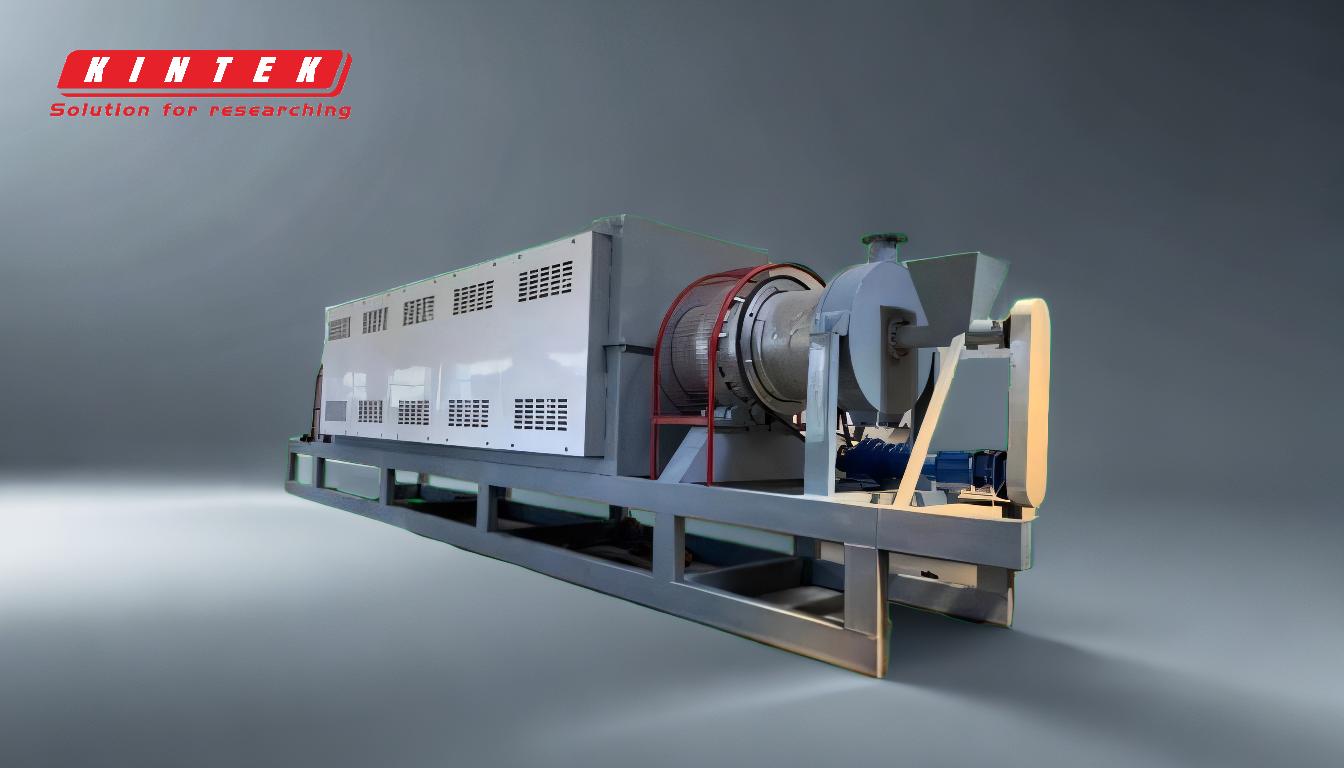The temperature of pyrolysis gas typically ranges from 350°C to 800°C, depending on the specific conditions of the pyrolysis process, such as the type of feedstock, reactor design, and desired product distribution. Higher temperatures generally favor the production of non-condensable gases like syngas, while lower temperatures may produce more liquid and solid products. The exact temperature is influenced by factors such as heating rate, residence time, and the composition of the feedstock.
Key Points Explained:

-
Temperature Range of Pyrolysis Gas:
- Pyrolysis gas is typically produced at temperatures between 350°C and 800°C.
- At lower temperatures (350-500°C), the process favors the production of liquid and solid products like bio-oil and char.
- At higher temperatures (above 500°C), non-condensable gases such as syngas (a mixture of hydrogen, carbon monoxide, and methane) are more prevalent due to thermal cracking and tar decomposition.
-
Factors Influencing Pyrolysis Gas Temperature:
- Feedstock Composition: Different materials decompose at different temperatures. For example, biomass with high volatile content produces more gas at lower temperatures compared to materials like tires or plastics.
- Heating Rate: Fast heating rates favor gas production, while slower rates may yield more char.
- Residence Time: Longer residence times at high temperatures enhance gas production by allowing more complete thermal decomposition.
- Reactor Design: The type of reactor (e.g., fluidized bed, fixed bed) can influence the temperature distribution and gas yield.
-
Effect of Temperature on Product Distribution:
- High Temperatures (500-800°C): Promote the formation of syngas and reduce the yield of liquid and solid products. This is due to the breakdown of tars and heavier hydrocarbons into smaller molecules.
- Low to Moderate Temperatures (350-500°C): Favor the production of bio-oil and char, as the thermal decomposition is less severe.
-
Practical Implications for Equipment and Consumables Purchasers:
- Reactor Selection: Choose reactors capable of achieving and maintaining the desired temperature range for the target products (e.g., fluidized bed reactors for high gas yields).
- Energy Efficiency: Higher temperatures require more energy input, so purchasers should consider energy-efficient heating systems and insulation materials.
- Feedstock Preparation: Ensure the feedstock is suitable for the desired temperature range. For example, smaller particle sizes and consistent moisture content can improve thermal decomposition efficiency.
- Product Recovery Systems: High-temperature pyrolysis may require robust gas cleaning and cooling systems to handle syngas effectively.
-
Environmental and Economic Considerations:
- Energy Use: Higher temperatures increase energy consumption, which may impact operational costs and greenhouse gas emissions.
- Product Value: Syngas produced at high temperatures can be used for energy generation or as a chemical feedstock, adding economic value to the process.
- Waste Management: Pyrolysis at optimal temperatures can reduce waste volume and convert it into valuable products, contributing to a circular economy.
In summary, the temperature of pyrolysis gas is a critical parameter that depends on the process conditions and desired outcomes. Equipment and consumables purchasers should carefully consider the temperature range, reactor design, and feedstock properties to optimize the pyrolysis process for their specific needs.
Summary Table:
| Aspect | Details |
|---|---|
| Temperature Range | 350°C to 800°C |
| Low Temperatures (350-500°C) | Favors liquid and solid products (bio-oil, char) |
| High Temperatures (500-800°C) | Promotes non-condensable gases (syngas) |
| Key Influencing Factors | Feedstock composition, heating rate, residence time, reactor design |
| Practical Implications | Reactor selection, energy efficiency, feedstock preparation, product recovery |
| Environmental Impact | Higher energy use, potential for waste reduction, and economic value of syngas |
Ready to optimize your pyrolysis process? Contact our experts today for tailored solutions!








